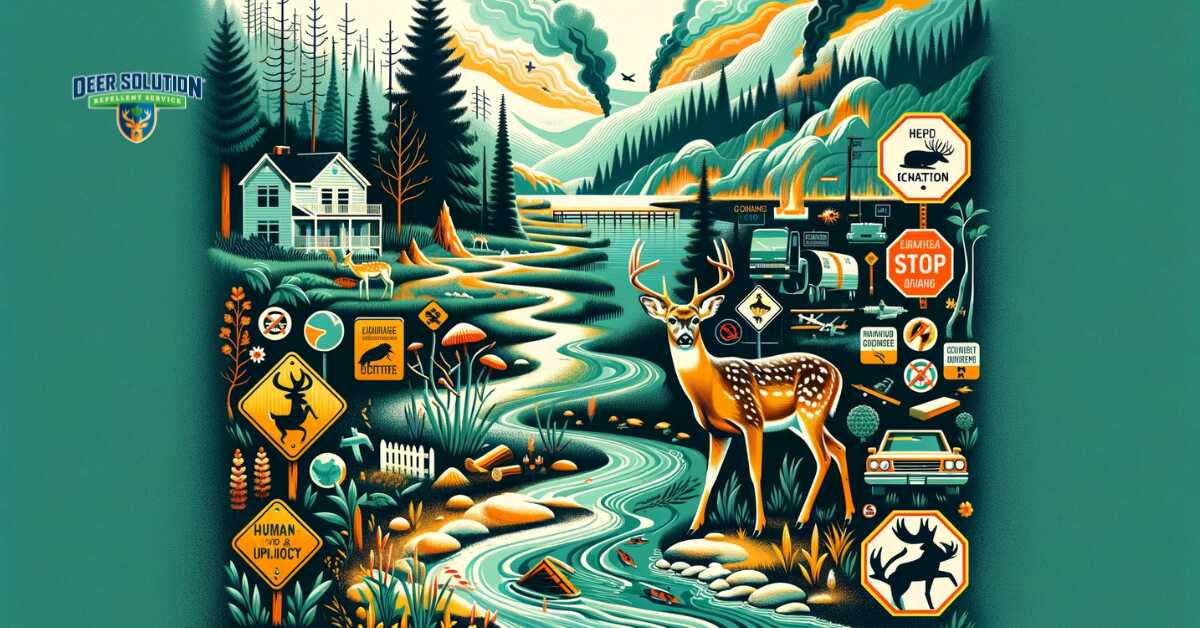Ocean County, NJ, is facing a significant environmental and public safety issue: the overpopulation of white-tailed deer. This escalating situation impacts road safety, agriculture, and local ecosystems, necessitating a comprehensive and multifaceted response from both the community and authorities.
Environmental Protection Fish & Wildlife
Each year in New Jersey, more than 15,000 deer collisions are reported, presenting an ongoing risk to motorists, including those in Ocean County. The New Jersey Department of Environmental Protection Fish & Wildlife emphasizes the importance of vigilance, especially in areas known for high deer activity.
Motorists are advised to slow down upon spotting deer and to avoid swerving if a collision appears inevitable, as this can lead to more severe accidents.
Deer Challenge
The implications of deer overpopulation extend beyond road safety and significantly impact local agriculture.
In Atlantic County, which faces similar challenges, farmers experience substantial losses due to deer damage. Studies have highlighted the extensive, often hidden, costs of such damage, which often exceed the direct impacts on crops. This situation forces many farmers to alter their farming practices or abandon fields prone to deer damage.
In response, New Jersey has implemented legislative measures, such as providing grants for deer fencing, to protect agricultural interests from deer-related damages.
Essex County’s approach to managing deer overpopulation includes an annual deer hunt, aimed at reducing deer numbers to preserve forest habitats and recreational spaces.
Since 2008, the cull has led to the removal of over 3,000 deer. Despite facing criticism from environmental and animal rights groups, the county maintains that the hunt is necessary for ecological balance and forest preservation. The culled deer are processed and donated as venison to food banks, contributing to community welfare.
Agriculture, and Effective Wildlife Management Strategies
The deer overpopulation issue is a complex problem that requires continuous and collaborative efforts. These include increased driver awareness, legislative support for agriculture, and effective wildlife management strategies.
The delicate balance between human safety, agricultural needs, and ecological preservation remains a pressing concern for Ocean County and its neighboring regions.
In-depth studies on deer behavior and population dynamics are crucial for developing effective management strategies. Researchers have noted that deer are adaptable animals capable of thriving in various environments, including the suburban landscapes of New Jersey.
This adaptability, coupled with a lack of natural predators, has contributed to their overpopulation.
Ecological Impact
The ecological impact of deer overpopulation is profound. Overbrowsing by deer leads to the loss of understory vegetation in forests, which in turn affects the habitat of other wildlife species.
The reduction in plant diversity also has implications for the ecological balance, as certain plant species are more heavily targeted by deer than others.
Furthermore, the overpopulation of deer exacerbates the spread of Lyme disease, as deer are key hosts for the ticks that transmit the disease to humans.
Community Engagement
Community engagement and education are vital components of addressing the deer overpopulation issue. Public awareness campaigns about the risks of deer collisions, safe driving practices in deer-populated areas, and the ecological impact of deer overpopulation can play a significant role in mitigating the problem.
Additionally, community involvement in deer management programs, whether through public forums or participatory decision-making processes, can enhance the effectiveness and public acceptance of these initiatives.
The challenge of deer overpopulation in Ocean County is multifaceted, involving road safety, agricultural damage, and ecological imbalance. Addressing this issue requires a blend of vigilance, legislative action, community involvement, and effective wildlife management strategies.
As New Jersey continues to navigate this complex issue, the cooperation and engagement of all stakeholders are essential in developing sustainable solutions for the benefit of both humans and the natural environment.










